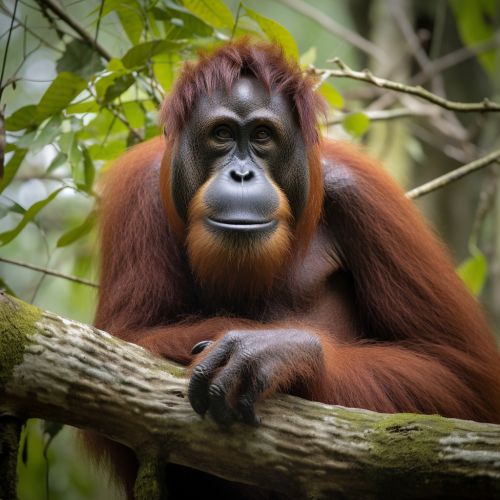Orangutan
Overview
The orangutan is a species of great ape native to the rainforests of Borneo and Sumatra. They are among the most arboreal of the great apes, spending nearly all their time in the trees, and are the only surviving species of the subfamily Ponginae.
Taxonomy and Evolution
Orangutans belong to the family Hominidae, which includes humans, gorillas, and chimpanzees. The orangutan lineage diverged from the rest of the hominid line approximately 15.7 to 19.3 million years ago, during the early Miocene epoch. The two extant species, the Bornean orangutan (Pongo pygmaeus) and the Sumatran orangutan (Pongo abelii), diverged approximately 400,000 years ago.


Physical Characteristics
Orangutans are the largest arboreal mammals and have proportionally long arms and short legs. Adults typically have a wingspan of up to 2 meters. Their hair is typically reddish-brown, unlike the brown or black hair seen in other great apes. Males and females differ in size and appearance. Dominant adult males have distinctive cheek pads and produce long calls that attract females and intimidate rivals.
Behavior and Ecology
Orangutans are solitary animals with social bonds occurring primarily between mothers and their dependent offspring. Adult males and independent adolescents of both sexes tend to be solitary. Orangutans are opportunistic foragers, and their diets vary markedly from month to month. Fruit makes up 65–90% of the orangutan diet, and they consume over 300 different varieties.
Conservation Status
Orangutans are among the most endangered primates. They have been severely affected by habitat destruction due to logging and palm oil plantations, and are also hunted for the illegal pet trade. Conservation efforts are focused on protecting remaining wild populations and rehabilitating and reintroducing confiscated pets back into the wild.
